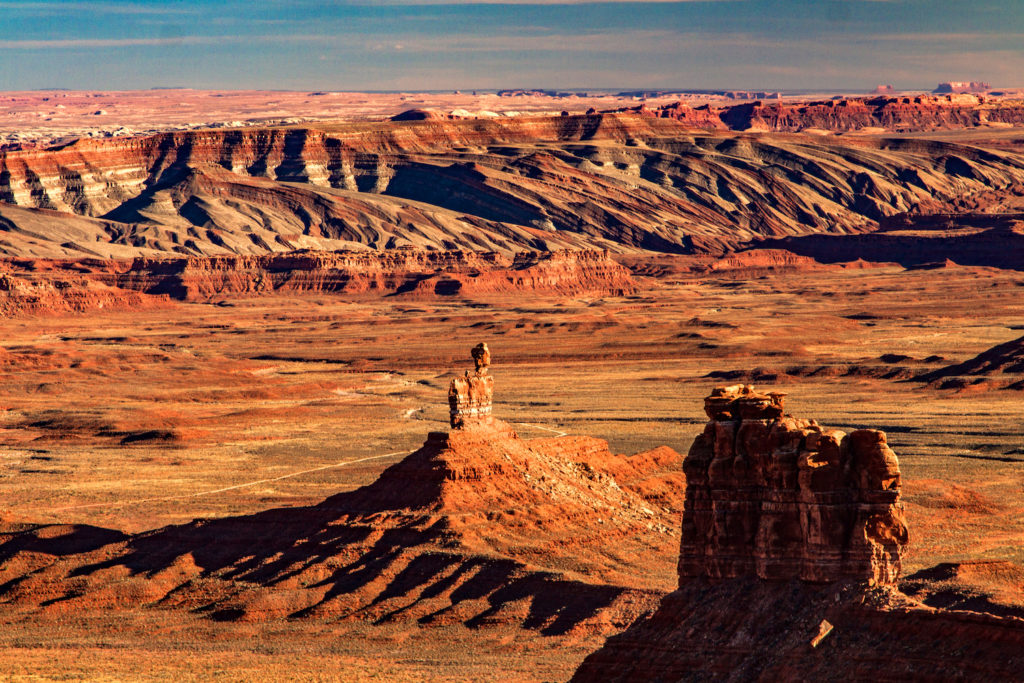Art World
Easter Island, Notre Dame, and Bears Ears Are Among the World’s Most Threatened Heritage Sites, the World Monuments Fund Says
The 25 landmarks will be eligible for $1.6 million in conservation funds starting next year.

The 25 landmarks will be eligible for $1.6 million in conservation funds starting next year.

Taylor Dafoe

The fire-ravaged Notre Dame Cathedral in Paris, the rapidly shrinking Bears Ears National Monument in Utah, and the Rapa Nui National Park in Chile, whose ancient stone carvings are threatened by mass tourism, are among 25 sites named by the World Monuments Fund as in danger of being lost. The sites, which are included in the organization’s biannual World Monuments Watch list, are now eligible to receive a portion of $1.6 million in conservation funds.
A panel of heritage experts selected this year’s group from a long list of more than 250 nominations. The goal was to select sites that satisfy three criteria: they are cultural significant, in imminent danger, and are accessible to the WMF and its partners, enabling them to make a lasting contribution to their survival.
The list of landmarks, which spans 21 countries, includes the Sacred Valley of the Incas, a fertile region near Machu Picchu in Peru that is threatened by the construction of a nearby airport; the Gingerbread Neighborhood of post-colonial homes in Port-au-Prince, Haiti; the Mam Rashan Shrine, a mosque in Iraq that was nearly destroyed by extremist violence; and the Woolworth Building in San Antonio, once home to one of the first southern restaurants to embrace desegregation.

Notre-Dame de Paris, 2019. Courtesy of the World Monuments Fund.
“The 2020 World Monuments Watch includes iconic treasures like Easter Island and socially significant sites like the San Antonio Woolworth Building, reminding us that cherished places are determined not just by their architectural value, but also by their impact on communities around the world,” Bénédicte de Montlaur, CEO of WMF, said in a statement. “These remarkable sites demand sustainable, community-led solutions that bring people together and fuse conservation with social change. We are excited for the World Monuments Watch to kick start that impact.”
Beginning next year, the World Monuments Fund will partner with local organizations in each location to plan conservation and advocacy strategies for the sites. American Express, the founding sponsor of the fund, will then decide how to dole out the $1 million the company committed to this year’s program. An additional $600,000 will come from matching grants from the Stavros Niarchos Foundation and the Ford Foundation.

The Port-au-Prince campus of the University of Notre Dame d’Haiti in the Gingerbread Neighborhood, 2017. Photo: Columbia GSAPP. Courtesy of the World Monuments Fund.
Of the more prominent monuments, many are in urgent need of conservation. A calamitous fire nearly destroyed the Notre-Dame de Paris earlier this year, while Bears Ears, a 1.35 million-acre stretch of federal land in Utah declared a national monument in 2016, is threatened by encroaching industries after President Trump reduced the size of the protected land by 85 percent last year.
The organization also made a particular effort this year to incorporate the voices of indigenous communities, who have historically been left out of the discussion about conservation of their own lands. The effort to protect the rock formations of Rapa Nui National Park, better known as Easter Island, will focus on giving the indigenous community the resources to preserve the site’s rock carvings.
See the full list of landmarks on the 2020 World Monuments Watch here.